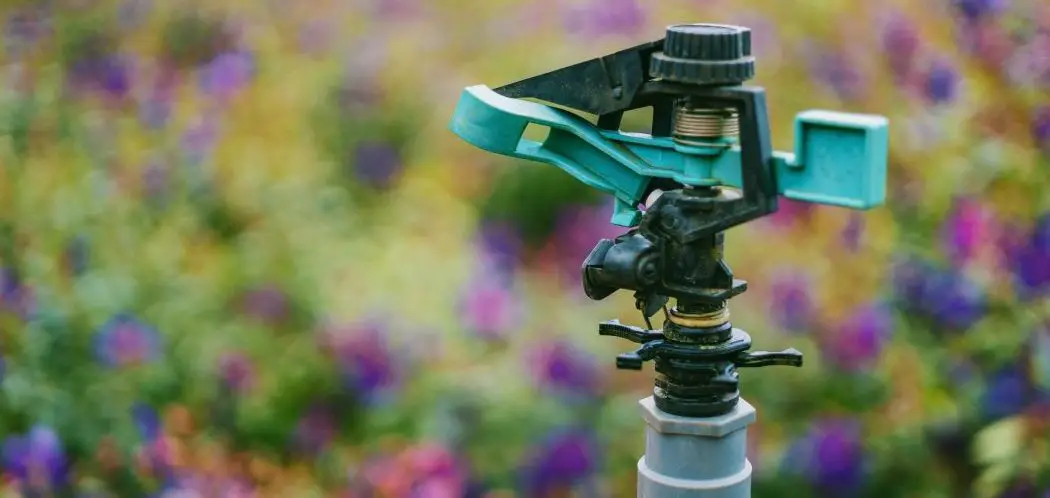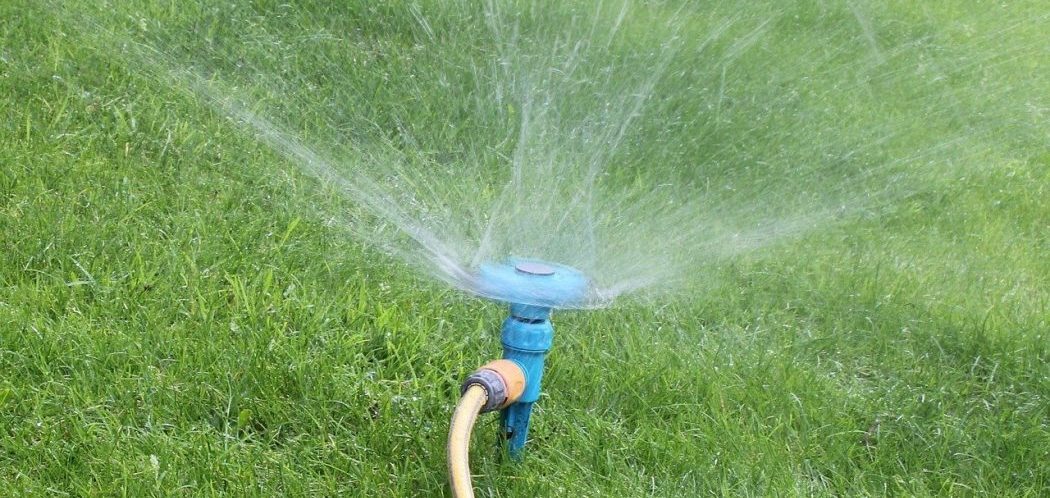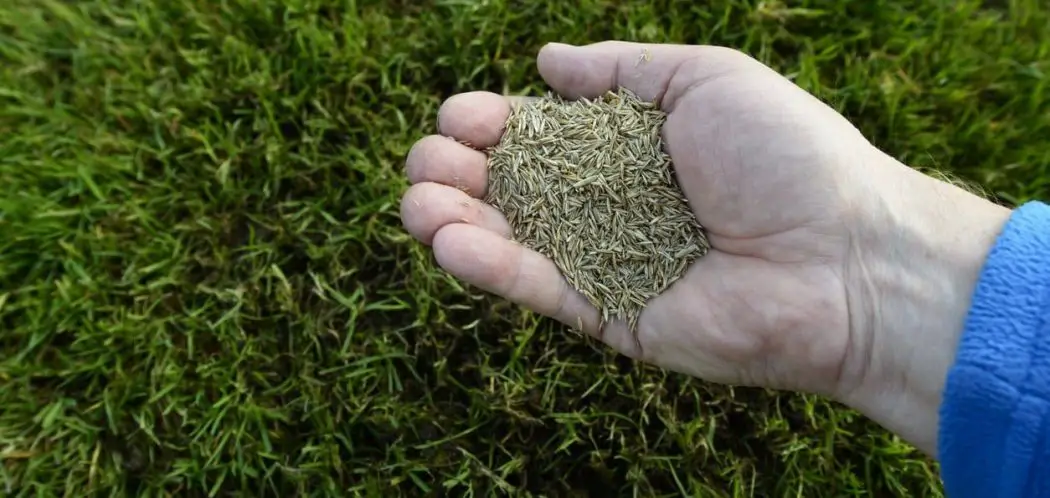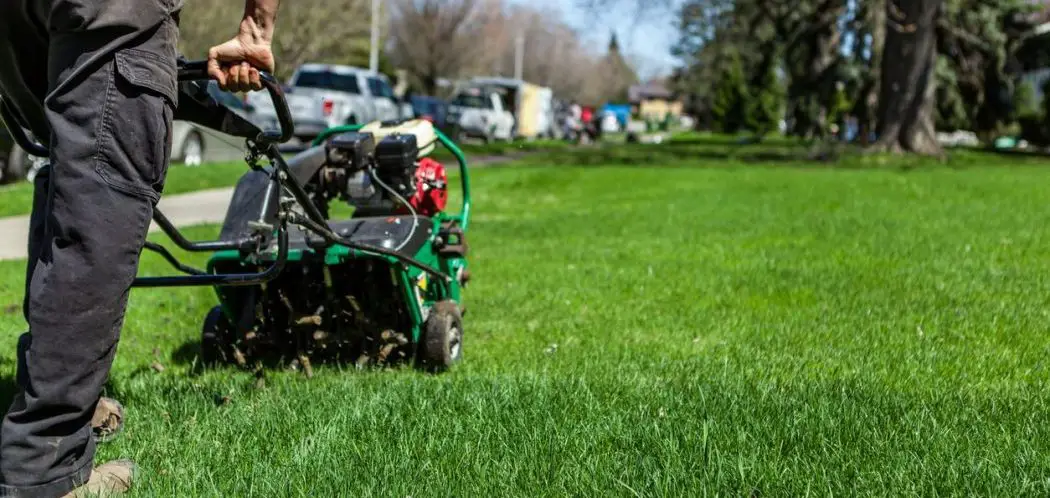Most people will tell you to give your lawn an inch of water per week. This is because that’s the ideal amount of water it takes to get down into the root system. Even if you have a small amount of rain every single day in a week, your grass still may have a shallow root system so it’s still be important to water both deep and infrequent.
When you water grass absolutely matters.
A lot of people make the mistake of irrigating every day. This results in the soil being saturated which prevents the amount of air need for the grass to grow and be healthy. You want to avoid over watering your grass. It’s good to stress the grass a little and to avoid a shallow root system.
When you do irrigate, it’s good to get the water deep into the soil and then wait as long as possible so that the soil can dry out and fresh air can move deeper into the soil so the roots can have oxygen to breathe under the ground.
When you water the grass can also depend on the season and the particular area of your grass in your yard as we shall discover.
In any event, a proper irrigation schedule is essential to get the best lawn in your neighborhood.
Let’s take a look at some of the scenarios which relate to when you should water your grass.

The Best Time of Day to Water Your Lawn
Let’s look at what happens when we water at different times in the day.
Morning
The ground takes up some of the water you put down but as the sun rises, the water on the surface evaporates. As a result, your lawn gets a good amount of water but leaves no excess remaining.
Midday
If you water you grass at midday, the water quickly evaporates. The soil will only soak up a small amount of the water you put down. Of course, this will depend on the temperature and the humidity.
Night
If you water at night, the water will not evaporate quick enough. Rather, it will remain on your lawn throughout the entire night. These wet cool conditions highly increase the chance of lawn disease and fungus growth.
Night-time is the WORST time of day to water your lawn!
The best time of day to water your lawn is in the morning, preferably between 6am and 10am.
Watering during this time allows the water to penetrate the ground, soak up and evaporate. By watering in the morning, you’ll prevent excess water on your lawn. This is important to decrease the likelihood of fungus growth and lawn disease.
The Best Time to Water New Sod and Seed
The watering schedule of new sod and seed is absolutely critical to its success. Your installer should provide you with instructions on how to water your new sod. If they don’t, you should be able to find guidance elsewhere online.
You want your new sod to stay damp and moist all the time but not soaking wet. In general, your watering schedule for new seed/sod should look similar to the following over the first few weeks:
Week 1: Three times per day
Week 2: Two times per day
Week 3: Once per day
After a few weeks, your new sod should be rooted and you can now follow a normal watering schedule.
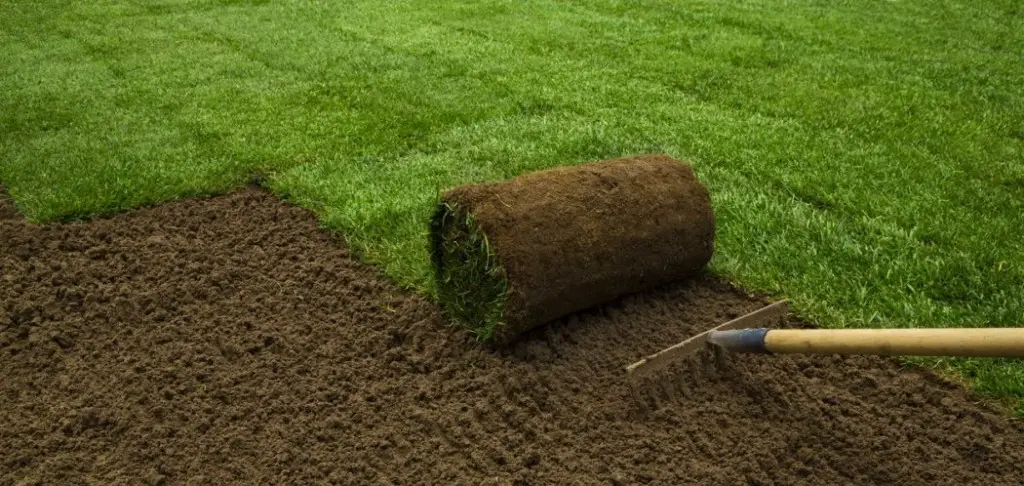
The Best Time to Water Grass by Season
Spring
When you start watering your lawn again in the springtime will depend on how much rain you get.
If you’re not getting at least one inch of water per week on your lawn, you’ll want to start watering.
As you get more experienced with your grass, you’ll start to learn to recognize the signs of when it gets dry and needs to be watered.
In seasons where the temperature is lower, there will be less evaporation meaning and so your soil will hold onto moisture a little longer. There will be less deep drying taking place. You may notice that the grass near a concrete driveway or a path might start to look a little rough first. This is because the sun warms up the concrete causing the soil near to it to dry out much faster than other areas. Look for the grass beginning to wilt in these areas. It’s likely a sign that your lawn could do with some more water.
In Spring time, it’s definitely important to water your lawn deeply. It’s then good to follow this with a dry out period, sometimes even up to a full week.
In the cooler temperatures, you won’t run the risk of deep drought drying but if your lawn is constantly wet, it’s more susceptible to disease and fungus.
You want to avoid keeping the grass wet all the time so deep cycle watering is most appropriate during this time of the year.
Try and replicate a heavy rain day about once a week. I like to do this by setting up a few short ten-minute cycles at each sprinkler station.

Should You Water Your Grass During the Winter Months?
Keep in mind that your grass still needs water even if it’s cool so feel free to water your grass but only if it really needs it.
Using too much water on your grass is a waste of time and money! It can also lead to unwanted disease and fungal issues too.
If you have warm season grass, it’s likely going to go dormant anyway so it’s best not to worry about it.
When to Water Grass in Summer
During drought conditions in summer, you want to set your watering schedule to be much more frequent. You’ll probably want to water your lawn every day. You don’t want to allow your lawn to be baked by those higher temperatures! You can keep a check on things by using a soil thermometer. I use this one (link to Amazon).
I like to water early in the morning for a short period and then water again in late afternoon to keep the grass from going drought dormant. Think of this as temporary relief watering until the conditions provide the deep watering needed.
When it’s really warm, i’d use a sprinkler that can give you a misty spray. This tends to have a greater cooling effect. I recommend this one (link to Amazon). I’d also recommend you pick up the Gilmour ply flexogen hose to go with it too!
Other Factors to Consider
- Your lawn may need varying amounts of water given certain growth environments. Debris and tree roots may require varying levels of water.
- Hydretain can be used for better moisture control.
- If you have a slope in your yard, water can collect at the bottom while the area of the top dries out faster.
- For sandy soils, and grass with little thatch, you may want to water up three times per day.

When to Water Your Grass – Using Weather Data Sources
It’s best to water your grass deeply and infrequently but that’s a little vague.
In order to get the best results for your lawn, consider using weather data from on online source to get a better idea of how much water your grass is already getting.
I like to look at the value of two numbers for my area.
- Evapotranspiration (inches)
- Total Precipitation (inches)
If you know your lawn needs an inch of water per week, you can look at an evapotranspiration table to work out how much water is being lost in each day in the week. You’ll also want to add on the total precipitating amount. From here, it’s pretty easy to calculate how much you water need to use to irrigate your lawn to make up any difference.
This is a great data driven way to find out if your giving your grass the right amount of water and when you need to water it. It’s going take out some of the guess work.
Weather Reports and Forecasts
Pay attention to the weather forecast! This will help you to decide on your watering schedule for the week. I like to use https://www.weather.gov/. It will give you the amount of rainfall that is expected.
https://www.wunderground.com/ is great for letting you know how much rain has occurred in the past week.
Keeping up to date will allow you to adjust your sprinkler system so that your lawn gets the water it needs and water is not wasted.
When to Water Grass – Key Takeaways
In general, it’s best to water your lawn deeply and infrequently except for drought conditions. This is going to prevent a shallow root system by encouraging the roots to go deeper into the soil to find water.
Watering in the morning is the best way to go.
When you water your grass will depend on the season. Summer drought conditions need more care than any other time.
Your grass is a plant and you should treat it like one. If you see it wilting or looking rough it’s probably a good idea to water it.
I like to set up a sprinkler station to run on a time based on that area’s needs and conditions.
Remember to pay attention to the weather forecast. Although it’s not always 100% trustworthy, you might want to adjust your watering schedule if you know rain is on the way.

